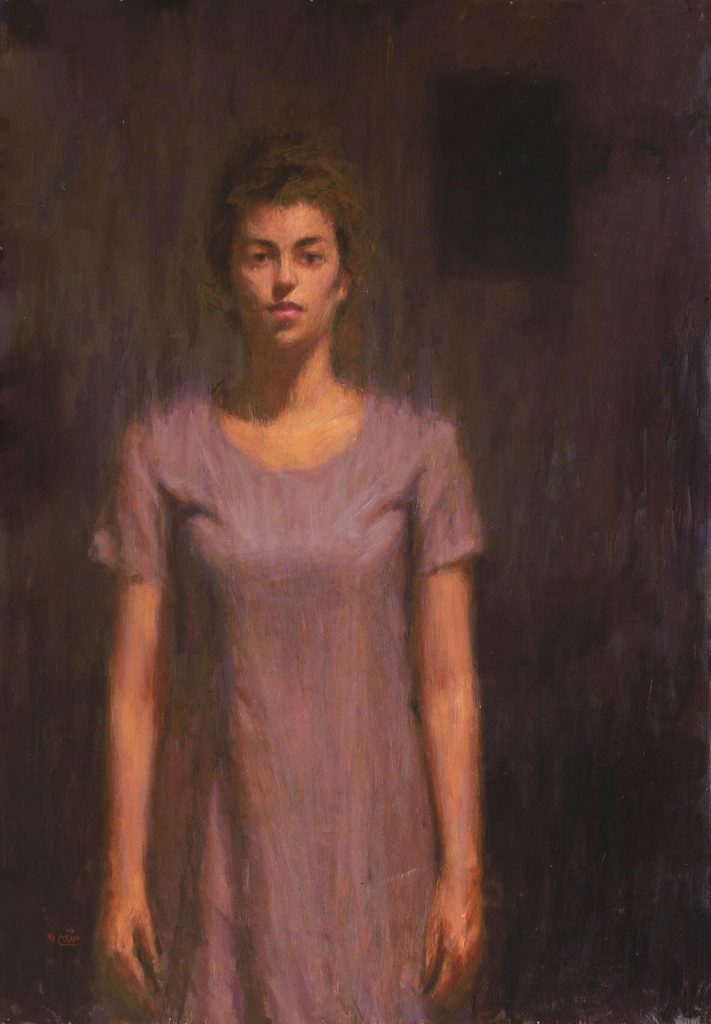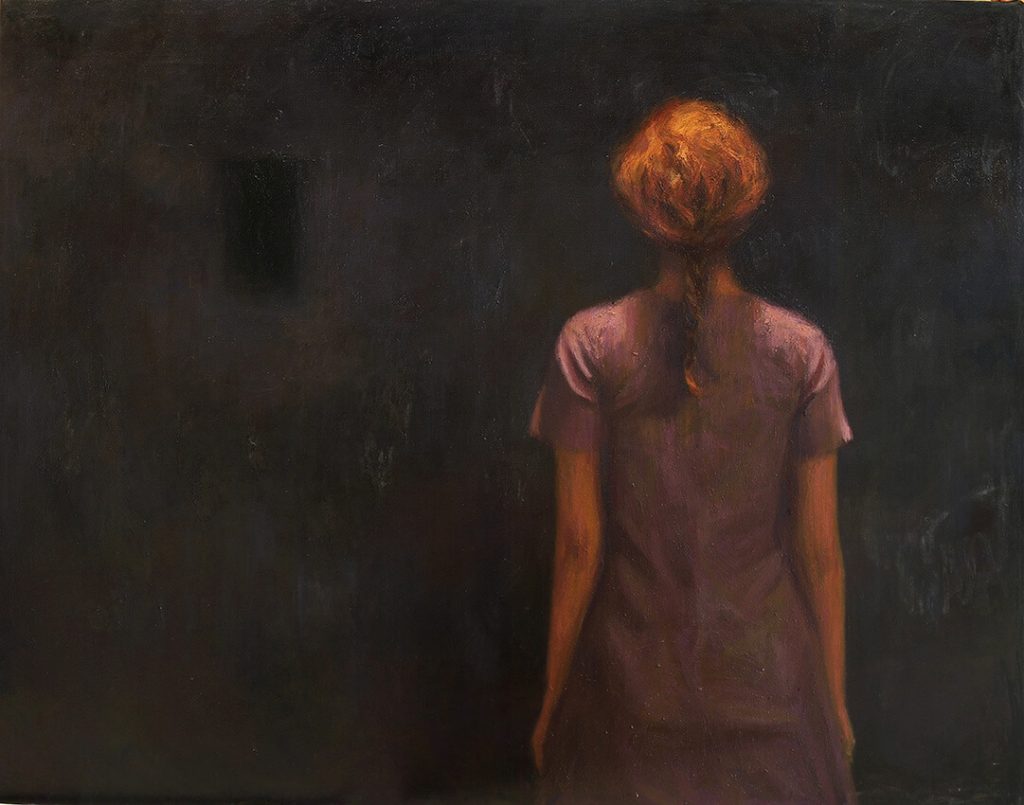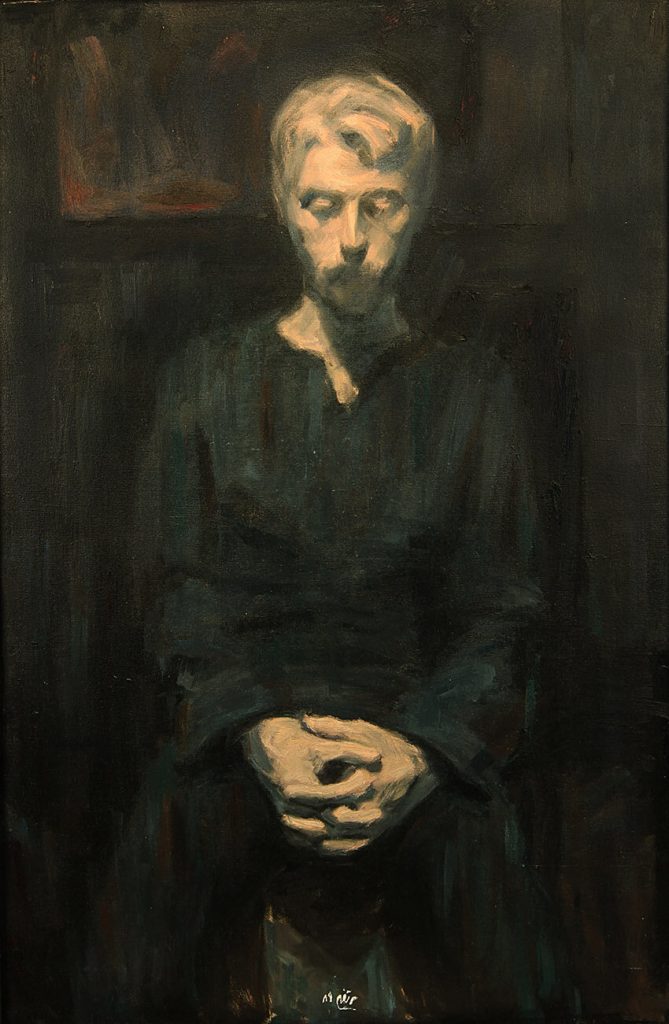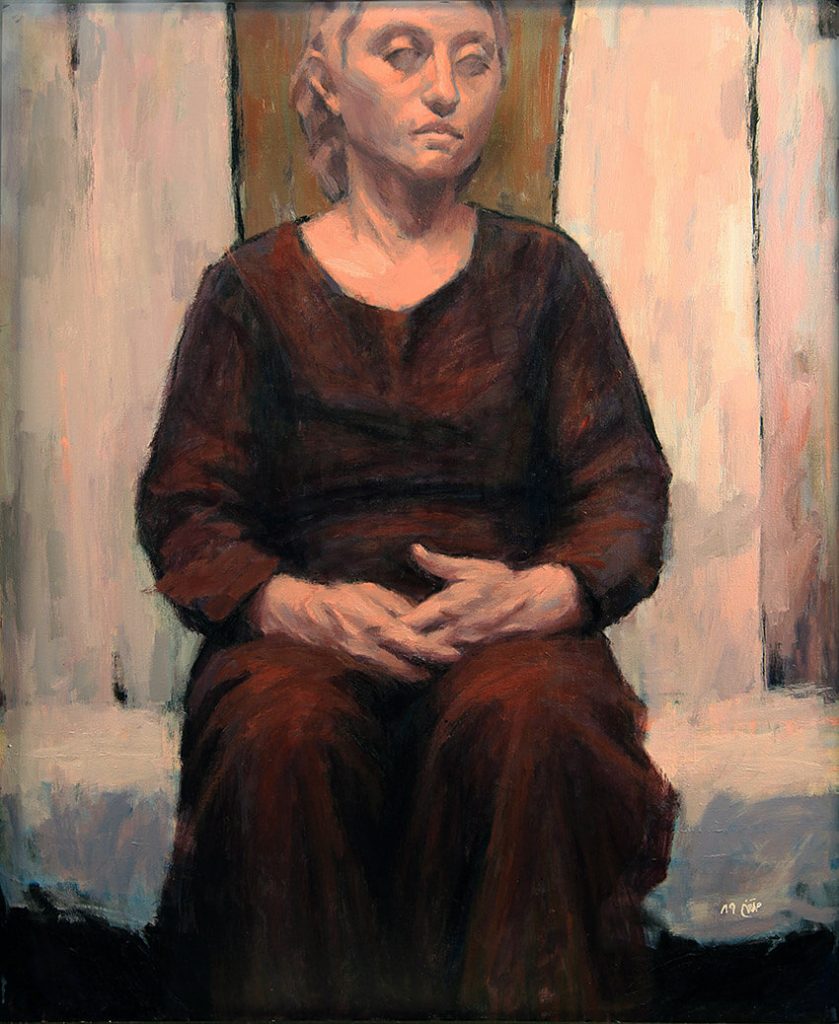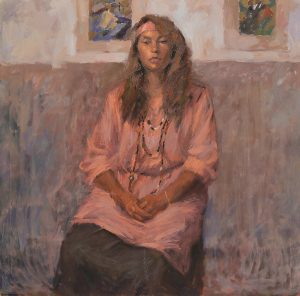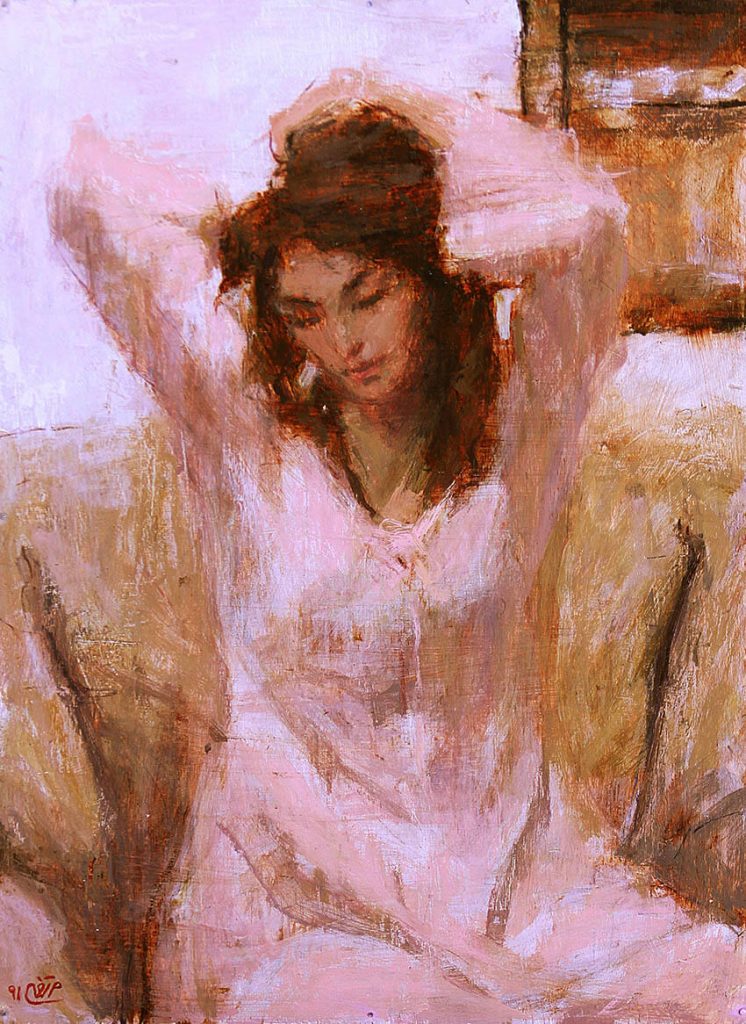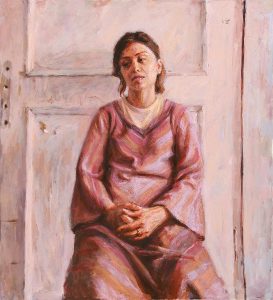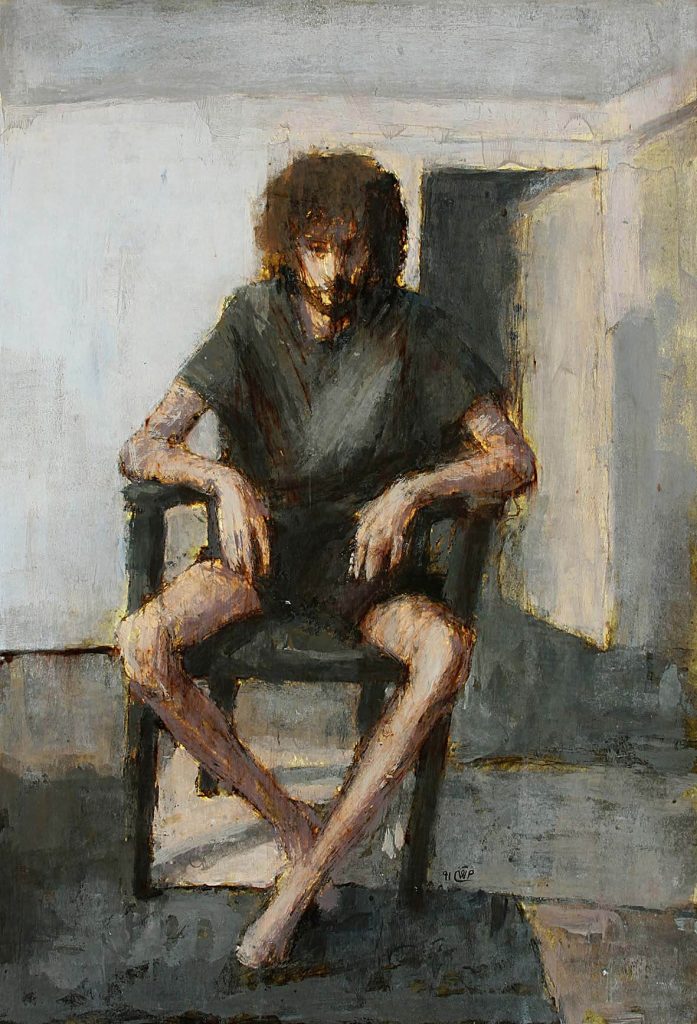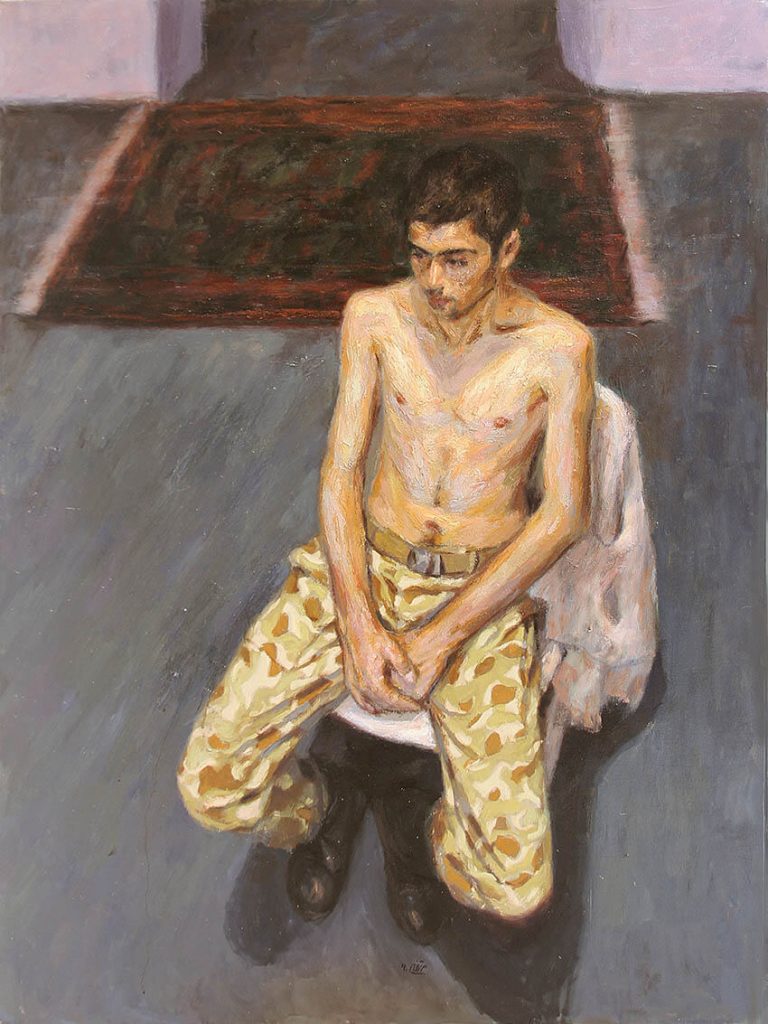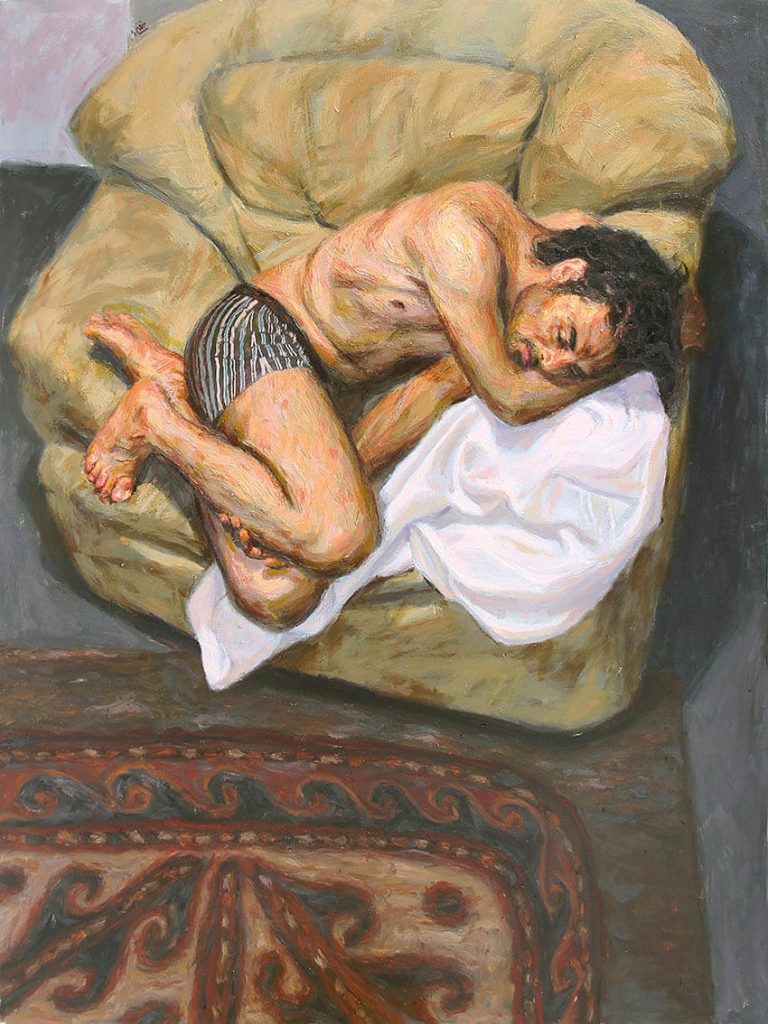Being ordinary art
One of the concerns artist dealing with is to search internal world of the modern human with all his fears and hopes and in particular the relation with the social and personal identity. That’s why the figurative art these days inclines to reflect the outside and inside of the human and this is one of the main approaches in this field. From this point of view, we can take a profound look at Morteza Khosravi’s works exhibited this spring in Golestan Gallery.
In this gallery, works created by oil and paint or ink water technics all depicting figures of men and women where when are majority. The interesting point is that the viewer finds no action nothing more than an internal description of subjects (e.g. sorrow, rage, and impatience) in these figures designed sophisticatedly by the painter. The main bed of this gallery can be characterized best by the term “ordinary” explaining that the author means not worthless by the term ordinary because ordinary drawing and reflection needs art. This adjective stresses feeling the gallery general atmosphere where the artist does not want to highlight any element in his paintings.
Khosravi acts as impressionist painters and distinguishes the local or natural color of things and the subject of painting and the color the eyes catch from these facts. For this, he not only highlights the relative value of shadows and colors but also thinks of the interaction of cold and hot colors spectrum. This is why he narrates his subject from his own artistic viewpoint to discuss his reading from the subject’s mental state with the viewer in his drawings, though depicting figures with picture like frames and near reality without certain interference with the essence of the subject. However, what is welcomed by the viewers in Khosravi’s painting is his mastery on the designing that can be seen in a gallery.
Amin Noraei
Honar-e Farda, Contemporary Art Journal, No. +8, appendix, Spring 2012
